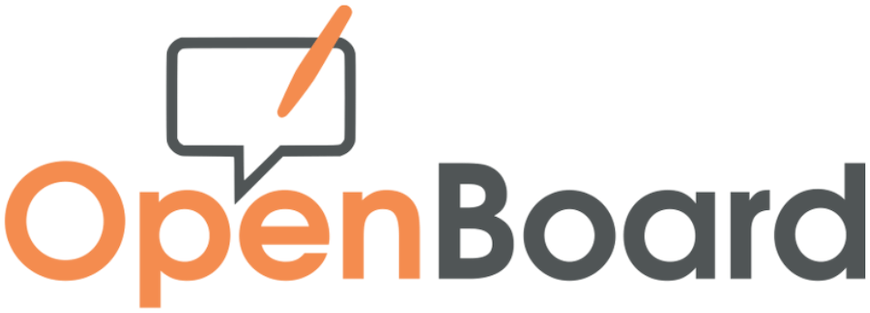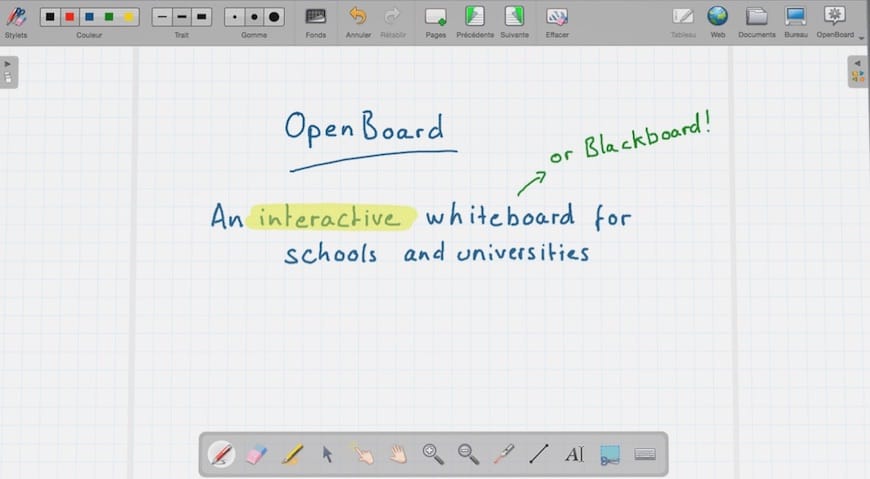How To Install OpenBoard on Fedora 41

Digital education tools have revolutionized teaching methods, and OpenBoard stands out as an exceptional open-source interactive whiteboard application. Designed specifically for educators, OpenBoard combines traditional teaching methodologies with digital capabilities, providing a versatile platform for creating engaging educational content. This comprehensive guide will walk you through multiple methods of installing OpenBoard on Fedora 41, ensuring you can leverage this powerful tool regardless of your technical expertise.
Understanding OpenBoard
OpenBoard originated as a fork of Open-Sankoré, evolving to focus primarily on core teaching functionalities that educators need most. As an interactive whiteboard software, it provides a clean, intuitive interface that makes digital teaching accessible to educators at all technical skill levels.
Key Features and Capabilities
OpenBoard supports various media types including images, videos, and web content, allowing educators to create rich, multimedia lessons. Its annotation capabilities enable users to highlight content, draw explanations, and create visual aids in real-time. The software’s cross-platform compatibility makes it accessible across different operating systems, including Linux distributions like Fedora 41.
Target Audience
While primarily designed for teachers and educational institutions, OpenBoard is valuable for anyone who needs to present information visually or interactively. Its intuitive design makes it suitable for elementary school teachers, university professors, and corporate trainers alike.
Prerequisites for Installation
Before installing OpenBoard on Fedora 41, ensure your system meets these requirements for optimal performance:
System Requirements:
- Up-to-date Fedora 41 installation
- Minimum 4GB RAM (8GB recommended)
- At least 500MB free disk space for the application
- Modern processor (dual-core or better)
- Compatible graphics hardware for smooth rendering
Preparation Steps:
First, ensure your Fedora 41 system is fully updated by running the following commands in terminal:
sudo dnf update
sudo dnf upgradeThis ensures compatibility with the latest packages and resolves potential dependency issues. It’s also advisable to back up any important data before proceeding with the installation.
Installation Methods Overview
There are three primary methods for installing OpenBoard on Fedora 41, each with distinct advantages:
Snap Package Installation – The simplest method, requiring minimal technical knowledge and providing automated updates.
Repository Installation – Offers better system integration and potentially improved performance.
Manual Installation – Provides complete control over the installation process, ideal for advanced users.
Your choice depends on your technical comfort level and specific requirements. For beginners, the Snap method offers the most straightforward path, while advanced users might prefer repository or manual installation for greater control.
Method 1: Installing OpenBoard via Snap
Snap packages provide a convenient way to install applications on Linux distributions, including Fedora 41. This method offers simplicity and automatic updates.
Enabling Snap Support:
Fedora doesn’t include Snap by default, so first install the Snap daemon:
sudo dnf install snapdEnable and start the Snap service:
sudo systemctl enable --now snapd.socketCreate a symbolic link to enable classic Snap support:
sudo ln -s /var/lib/snapd/snap /snapFor best results, reboot your system:
sudo rebootInstalling OpenBoard:
After rebooting, install OpenBoard from the Snap store:
sudo snap install openboardThe system will download and install OpenBoard and its dependencies automatically. Once complete, you’ll receive a confirmation message.
Verifying Installation:
Launch OpenBoard either through your application menu or by running:
snap run openboardIf you encounter permission issues, particularly with accessing files, connect the appropriate interfaces:
sudo snap connect openboard:home
sudo snap connect openboard:removable-mediaThe Snap method handles updates automatically in the background, ensuring you always have the latest version without manual intervention.
Method 2: Installing OpenBoard via Repository
Installing OpenBoard through a repository provides better system integration compared to containerized solutions like Snap. While there isn’t an official OpenBoard repository specifically for Fedora 41, we can adapt the process.
Creating Repository Configuration:
Create a new repository file:
sudo nano /etc/yum.repos.d/openboard.repoAdd the following configuration:
[openboard]
name=OpenBoard Repository
baseurl=http://openboard.ch/download/fedora/$releasever/$basearch/
enabled=1
gpgcheck=0Save and exit the editor (Ctrl+X, then Y, then Enter in nano).
Adding Repository Key:
Import the OpenBoard repository key for package verification:
wget -qO - https://openboard.ch/stable/openboard_repo.key | sudo tee /tmp/openboard_repo.key
sudo rpm --import /tmp/openboard_repo.keyInstalling OpenBoard from Repository:
Update your package lists and install OpenBoard:
sudo dnf update
sudo dnf install openboardThe package manager will calculate dependencies and prompt for confirmation. Type ‘y’ and press Enter to proceed. DNF will automatically handle all required dependencies.
Verification:
Once installation completes, launch OpenBoard from your application menu or by typing openboard in the terminal. Verify the installation by checking the version:
openboard --versionThis should display the current installed version, confirming successful installation.
With the repository method, OpenBoard will update alongside your regular system updates, ensuring you maintain the latest version with standard system maintenance.
Method 3: Manual Installation
For users who prefer complete control over the installation process, manual installation provides necessary flexibility. This method is particularly useful when repository or Snap options aren’t viable.
Downloading OpenBoard:
Visit the official OpenBoard website and download the appropriate package for Linux. Look for a generic Linux package or a specific RPM package for Fedora.
Installation Process:
Navigate to your download location:
cd ~/DownloadsIf you downloaded an RPM package, install it directly:
sudo dnf install ./openboard-*.rpmFor a generic Linux package (typically .tar.gz or .zip), extract it first:
tar -xzvf openboard-*.tar.gzor
unzip openboard-*.zipNavigate to the extracted directory:
cd openboard-*Installing Dependencies:
Install necessary development dependencies:
sudo dnf install qt5-devel libpaper-devel openssl-devel libXScrnSaver-devel qt5-qtwebkit-devel qt5-qtsvg-devel qt5-qtxmlpatterns-develCompiling and Installing:
Compile and install OpenBoard:
qmake-qt5 OpenBoard.pro
make
sudo make installThe compilation process may take several minutes depending on your system’s performance.
Creating Desktop Entry:
Create a desktop shortcut for easier access:
sudo nano /usr/share/applications/openboard.desktopAdd the following content:
[Desktop Entry]
Name=OpenBoard
Comment=Interactive whiteboard application
Exec=/usr/local/bin/openboard
Icon=/usr/local/share/openboard/icons/openboard.png
Terminal=false
Type=Application
Categories=Education;Save and exit the editor. This adds OpenBoard to your applications menu with the appropriate icon and category.
Post-Installation Configuration
After installing OpenBoard, proper configuration ensures optimal performance and usability. When launching OpenBoard for the first time, you’ll encounter a setup wizard guiding you through initial configuration.

Initial Setup:
Select your preferred language from available options. OpenBoard supports numerous languages, making it accessible to educators worldwide. This setting affects the user interface language and can be changed later if needed.
Configure document storage location. By default, OpenBoard stores documents in your home directory under “OpenBoard”, but you can customize this based on your preferences.
Customizing Settings:
Access further customization through Edit > Preferences. Here you can adjust:
- Display mode and interface appearance
- Toolbar arrangement
- Pen and stylus settings
- Document management preferences
For optimal stylus input, configure pen and touch settings under the “Pen” tab in preferences. Adjust sensitivity, pressure recognition, and palm rejection features to match your specific hardware capabilities.
Resource Management:
Explore background templates and available resources in the OpenBoard library. You can add custom templates and organize resources into categories for efficient access during classes. Taking time to properly organize these resources will save valuable teaching time in the future.
Troubleshooting Common Installation Issues
Despite following instructions carefully, you might encounter issues when installing or running OpenBoard on Fedora 41. Here are solutions to common problems.
Launch Failures:
If OpenBoard fails to launch after installation, check for missing dependencies:
sudo dnf install --allowerasing $(rpm -qpR ./openboard-*.rpm)For startup crashes, examine error logs:
journalctl -xe | grep openboardCommon causes include graphics driver issues or Qt library conflicts. Update graphics drivers or reinstall Qt dependencies:
sudo dnf update mesa*
sudo dnf reinstall qt5*Permission Issues:
If encountering permission errors when saving documents:
sudo chown -R $USER:$USER ~/.config/OpenBoard
sudo chmod -R 755 ~/.config/OpenBoardDisplay Problems:
For blurry or incorrectly sized interface elements, adjust scaling settings in OpenBoard preferences or desktop environment settings. This is particularly important on high-resolution displays.
Multimedia Issues:
For audio or video playback problems, install necessary codecs:
sudo dnf install gstreamer1-plugins-base gstreamer1-plugins-good gstreamer1-plugins-bad-free gstreamer1-plugins-ugly-freePost-Update Problems:
If OpenBoard worked but stopped after a system update, try reinstalling or downgrading specific packages that might have caused conflicts. Identify these by reviewing recent system updates:
dnf history list | headInput Device Issues:
For tablet or stylus input problems, verify that input devices are properly recognized:
xinput listYou may need to install additional drivers for your specific hardware for optimal performance with OpenBoard’s drawing features.
Optimizing OpenBoard for Educational Use
To maximize OpenBoard’s effectiveness in educational settings, implement these optimization strategies:
Interface Customization:
Customize the toolbar layout to match your teaching style. Right-click on the toolbar and select “Customize Toolbar” to add, remove, or rearrange tools based on frequency of use. Having frequently used tools readily accessible streamlines lesson delivery.
Resource Organization:
Create and organize a library of educational resources within OpenBoard. Use the “Library” feature to categorize images, videos, and interactive elements by subject, grade level, or lesson type. A well-organized library significantly reduces preparation time.
Template Development:
Optimize document templates for different teaching activities. Develop templates for specific activities like note-taking, problem-solving, or group discussions to maintain consistency across lessons.
Integration with Learning Platforms:
If your institution uses learning management systems like Moodle or Google Classroom, establish efficient workflows for exporting and sharing OpenBoard documents with these platforms.
Performance Tuning:
Adjust application settings based on your computer’s capabilities. On older hardware, reduce the resolution of recorded sessions and limit complex animations to prevent lag during presentations.
Create keyboard shortcuts for frequently used actions to speed up your workflow through Edit > Preferences > Shortcuts.
Updating OpenBoard on Fedora 41
Keeping OpenBoard updated ensures access to the latest features, security improvements, and bug fixes. The update process varies depending on your installation method.
Snap Updates:
For Snap installations, updates occur automatically by default. To manually check and apply updates:
sudo snap refresh openboardRepository Updates:
If installed via repository, update OpenBoard with your regular system updates:
sudo dnf updateTo update only OpenBoard and its dependencies:
sudo dnf update openboardManual Installation Updates:
For manual installations, download the latest version from the OpenBoard website and repeat the installation process. Before upgrading, back up your configuration:
cp -r ~/.config/OpenBoard ~/OpenBoard_config_backupReverting Updates:
If you encounter issues after updating, revert to the previous version. For repository installations:
sudo dnf downgrade openboardThe OpenBoard development team typically releases updates quarterly, but security patches may come more frequently. Enable automatic notifications for available updates through Fedora system settings to stay informed about new versions.
Congratulations! You have successfully installed OpenBoard. Thanks for using this tutorial for installing the OpenBoard on the Fedora 41 Linux system. For additional help or useful information, we recommend you check the official OpenBoard website.